Portraits Of Kurdish Guerilla Fighters: Back Drop By Savas Boyraz At Open Source Gallery
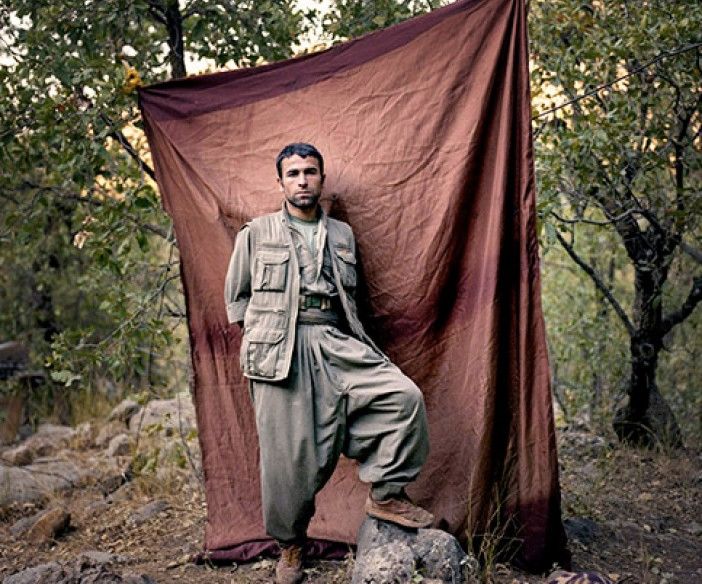
Telling the story of people in a remote area of a geo-cultural region spread across four countries offers immense challenges to an artist. In this case, the complexity of the journey is very much part of the artistic process.
The newest exhibition at Open Source Gallery (306 17th Street at 6th Avenue) features Back Drop, a video installation and photography exhibit created by filmmaker/documentarian/photographer Savas Boyraz. The exhibition debuted on Saturday, October 3 and will be running through Sunday, November 1.
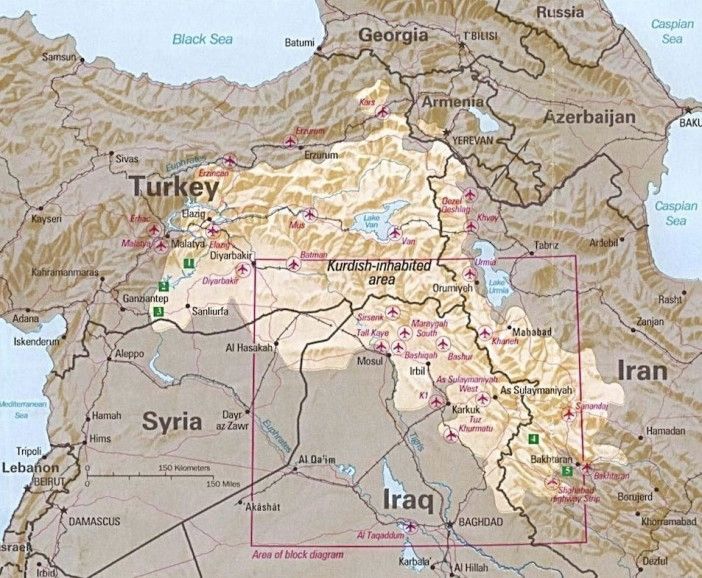
The geo-political region of Kurdistan sits within four countries: Iran, Iraq, Turkey, and Syria. Boyraz filmed and photographed much of his work for this project in the Kandil region of Northern Iraq.
Back Drop consists of a variety of artistic mediums — film, photography, and sound. The works featured in the exhibition include a collection of two of Boyraz’s recent projects: Meanwhile (2013), and Evin’s Story (2014).
Boyraz, along with his collaborator Martin Nordström and his technical crew were guests of the people who he interviewed in Northern Iraq. Some of the guerillas Boyraz interviewed are fighting to attain a homeland for the Kurdish people. In addition, the stories focus on individuals who are preparing to leave and fight against ISIS, as well as those who have returned from the fight.
Boyraz’s work is well-renowned internationally. He has received awards from the Hasselblad Foundation, the Swedish Arts Grants Committee, and is the recipient of the HSBC Photography Award.
We met with Boyraz at Open Source Gallery to discuss his interview process, travels through Kurdistan, aesthetic interests, and how it all connects to his identity as an artist.
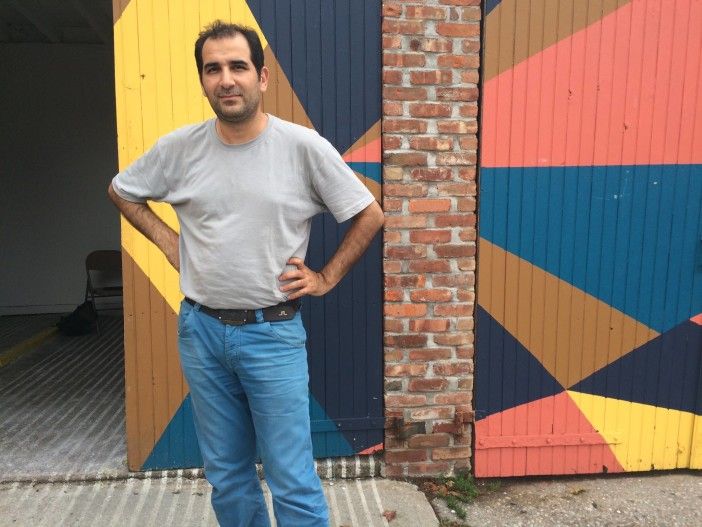
SSN: You’re currently living in Stockholm. Where are you originally from?
Savas Boyraz: While my parents are from Kurdistan, I grew up in Istanbul. Until I was a teenager, I didn’t know I was Kurdish. The issue of this complicated identity is in all my projects. They deal with trying to reconnect with my cultural background I did not know.
What are you currently working on in Stockholm?
I first studied in Istanbul at Mimar Sinan Fine Arts University. This is where I received my BFA [Bachelor of Fine Arts] in Photography. Later on, I moved to Stockholm where I’m studying for my MFA [Master of Fine Arts] on a topic called Art in Public Realm at Konstfack.
Since you didn’t know of your Kurdish background until you were older, did you learn to speak Kurdish later on?
Part of how I became familiar with the language was through listening to Kurdish music. I also learned a lot from watching Kurdish t.v. channels.

What brought you to Brooklyn for this exhibit? Have you worked with Open Source before?
This is my first time working at Open Source. I’ve been to Brooklyn before. I did a residency for about six months and I lived in Bed-Stuy when I was here.
You did film some of the work in Williamsburg that is featured in the exhibition. How did it feel being here?
At first, New York City as a whole felt hostile and aggressive. But when you actually start to meet people, the atmosphere changes quickly. At the end of my residency, I didn’t want to leave. Brooklyn is filled with people of different backgrounds giving to each other. But, of course, you see the poverty and contradictions as well.
Yet so much of your work happens in areas that may also have that hostility.
It’s true. Most places I go are filled with conflict. But once you are there on site, and surrounded by people with warm looks in their eyes, the risk is not that present anymore.
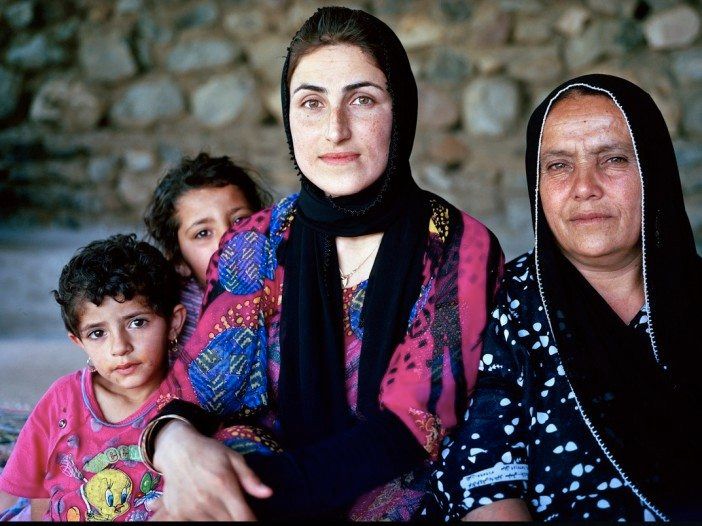
There may be people who view the exhibition that are not well-versed in all the political details of Kurdistan. Do you think this could distance themselves from the exhibit?
I think this exhibition doesn’t provide a lot of information about the political picture, however I hope that it will provide insight into an emotional status of those people. I am trying to open up a window about the uncertainty of our time.
You brought a crew with you when you traveled. How did they engage with the people you interviewed?
You cannot separate the crew from the people. They are part of the experience. My collaborator Martin Nordström was an important part of the process.
How did Martin feel about being present in this part of the world?
You should really ask him.

We then spoke with Martin Nordström from Stockholm and asked him some questions about his experience.
When you were traveling with Savas, what was it like being an outsider to this culture? Did you ever feel uncomfortable or even in danger?
Martin Nordström: I never felt outside the the culture I met and visited for a short while, as it was a very open and welcoming culture. Sweden is a mixed country with many different cultures and many different personalities, and so were the people I met in the Kurdish mountains.
Many were intellectuals and feminist socialistic open minds. Everyone was open to art as a way of discussing life. This is the same sort of people I prefer to hang around with in Europe and Sweden.
Savas and I went to a part of Iraq that at the time was not in direct war, but the nervous and tense behavior of the Iraqi military and police made it clear that something was going on. The war was for sure around the corner. And yes, it was scary.
Only a couple of month after we were back in Europe, ISIS attacked the city we had been to. And now the Turkish army is attacking the same mountain areas. The same area where Savas and I had done our different and separate art projects — about the guerilla life. It is terribly sad that fighting started again.
What attracts you to Savas’ work? How is it unique and powerful to you?
MN: It is fantastic to be able to work with someone whom you share the same ideas with in difficult subjects such as war, struggle, and politics. It is an inspiring feeling to work on something together and see our individual parts merge and become something greater than the separate parts are by themselves.
Savas is a very devoted and energetic artist, and is always moving towards the next step to take with his art. He combines his dreams and fantasy with the real events passing through his life, and the result is often a beautiful and poetic story about the sometimes ugly and harsh reality of the world.
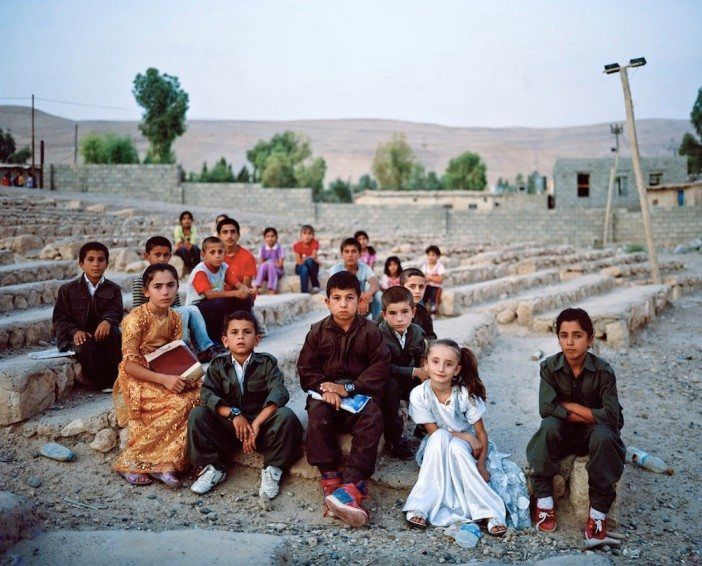
It must be challenging to have an intimate conversation while you have a camera on site. What role does the camera play in this experience?
SB: The camera does become an independent character. When they look into the lens, I hope they look into it in the way that they are looking at you. Photography is an encounter between camera and an event.
What did they think of the equipment you and your collaborators brought with you?
I brought an old Polaroid camera with me. This way I could take photos and give these to them.
For them to see people coming in with equipment and these weird ideas … it became something they would remember. And it was important to them.
Are you looking forward to speaking with the audience who come to the gallery?
Unfortunately, I have to leave here on October 6. I want to see all their reactions. I’ll miss the fun part of the show.
The circle is not closed until it meets the receiver, the audience.
EVIN from savas boyraz on Vimeo.
The Exhibition Rundown: Savas Boyraz: Back Drop
Where: Open Source Gallery, (306 17th Street at 6th Avenue)
When: Now-Sunday, November 1
Information: contact@opensourcegallery.org
Hours: Wednesdays-Saturdays, 2:00pm-6:00pm and by appointment.
Admission: Free
Special Event: Sunday, October 18 at 6:00pm, Open Source will be hosting a panel discussion about ethnicity, community, identity, and art that will tie in to Savas Boyraz: Back Drop. The panel will be moderated by Pennee Bender (American Social History Project, CUNY) and panelists will include artists Betty Yu and Dean Moss, Judy Pryor-Ramirez (Director of Civic Engagement & Social Justice, The New School), Maritza Arrastia (Educator, Turning Point Brooklyn), and ethnomusicologist Ozan Aksoy.



